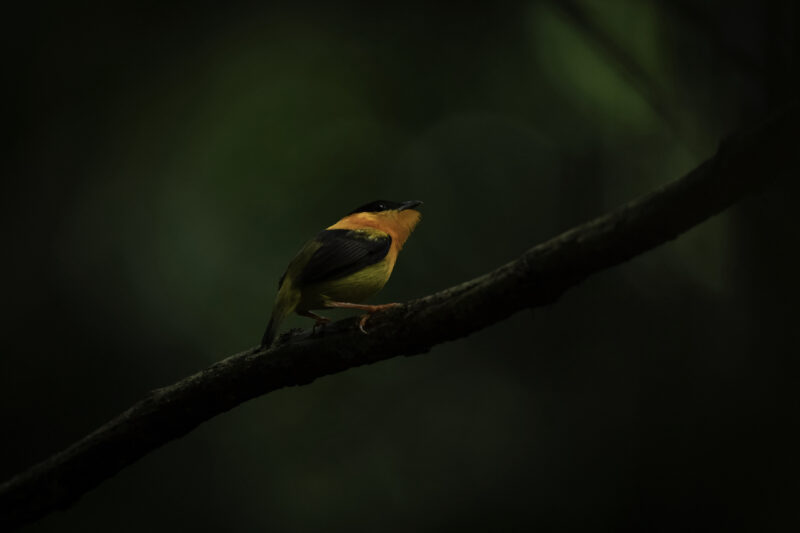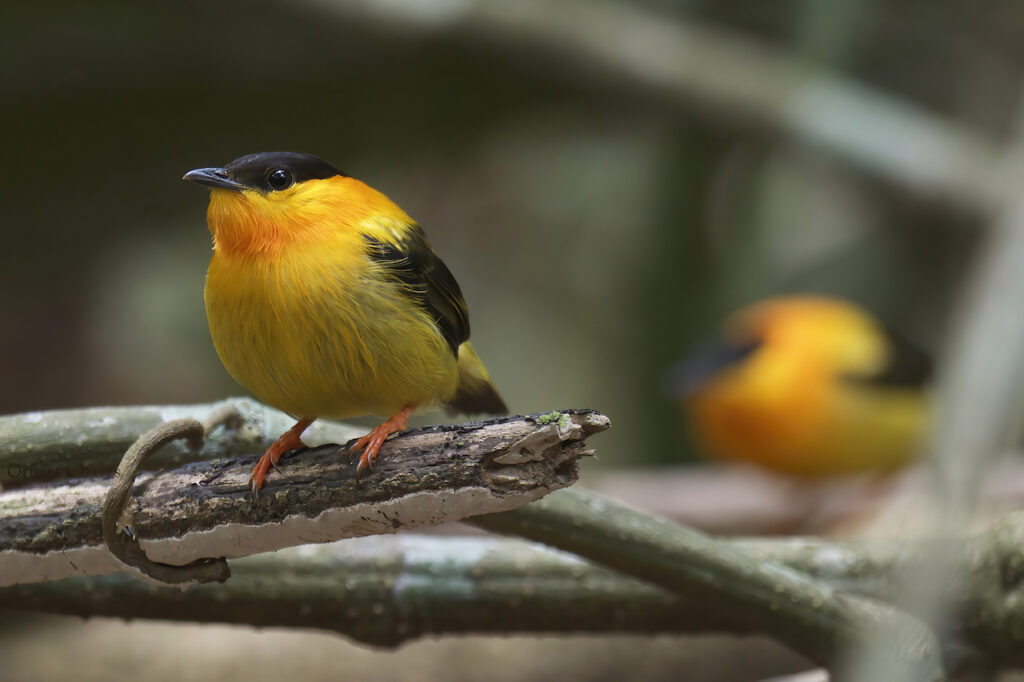Bird species of the Week

Orange-collared Manakin (Manacus aurantiacus)
Taxonomic information
Animalia Kingdom
Phillum: Chordata
Class: Birds
Order: Passeriformes
Family: Pipriidae
Genre: Manacus
Natural History
Reproduction
Males form courtship assemblies in which each individual removes all debris from a small circular area of ground, over which it hops in different directions on slender erect stalks, emitting a loud clicking sound with each hop. When the female arrives, the two jump together and crisscross over the cleared area. Often 2 or 3 males together make displays while moving through the forest.
Nest consists of a shallow cup hung between the slender arms of a horizontal fork, usually made of light-colored bast fibers, with no moss or leaves attached below. It is located at a height of 0.6 to 2.5 m., and rarely higher in the forest, a coffee plantation, shady gardens, or above a stream. 2 pale gray or bluish eggs are laid, with abundant brown specks; the side markings are often longitudinal. They reproduce from March to June, and rarely in September.

Feeding
It flies to collect fruits (eg Miconia sp.) and insects.
Behavior
They are solitary, except in courtship assemblies.
Habitat and distribution.
They are generally found in the lower levels of the most transparent parts of moist forests, margins, areas of secondary growth, shady crops, and gardens.
It is a common resident locally from Carara National Park south to the Pacific slope, and from the lowlands to 1100 m.
Distribution outside of Costa Rica
They are found in Costa Rica and Panama.
Distribution of conservation area
Osa, Central Pacific, and Amistad Pacific
Scientific description
It measures 10 cm. and weighs 15.5 grams. Adult males show the 5 outermost primaries very narrow in the distal half; the other rows present the other cannons thickened and arched, so that the wings produce a rustle or tapping when flying. The crown, wings, and thick stripe across the back are black. The cheeks, throat, chest, and thick ruff around the back of the neck to the shoulders and upper back are glossy bright orange. The lower back and rump are olive green. Underneath the posterior region is golden yellow, with an olive tinge. The bill is blackish and the legs are orange. Females are olive-green above, with a more yellowish and paler rump and upper-tail coverts. The throat is yellowish-olive, and the breast and flanks are olive-green, the abdomen is bright olive yellowish.
Immature specimens are similar to the adult female but with a gold-tinged throat and breast.
The juvenile specimens are also similar to the adult female. but with the legs between yellowish and flesh orange.
